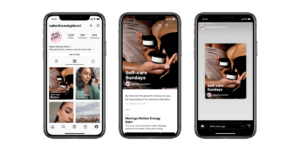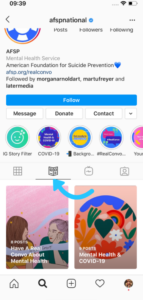3 Ways To Boost Your Digital Presence
These days, a strong digital presence is required for any business that wants to bring in or engage with new and existing customers. But what is a digital presence? And what elements are needed for a strong digital presence?
In short, Digital Presence is essentially what people find about your business when doing an online search, including everything from your website to social media, customer reviews, and more. Oftentimes, in today’s digital age, digital presence gets overlooked. Digital Presence allows businesses to showcase themselves online. It’s crucial to have a digital presence implemented within your marketing strategy for many reasons. The main one being, people searching for your business online.
A recent survey done by Bright Local found that 93% of consumers used the internet to search for and find a local business and 87% read online reviews for local businesses. What consumers find when doing these online searches will impact how and where they spend their money. When you do a quick online search for your business or industry, what results appear? Do any reviews or consumer recommendations come up? Is your website in the #1 spot?
Generating a digital presence can be simple with the help of resources like a website, social media platforms, business directory listing, customer reviews and other online sources. Here’s a look at 3 simple ways you can boost your digital presence.
1. Boost Your Site’s Search Engine Optimization Strategy
Search engine optimization (SEO) is a process that increases your website traffic and improves your brand’s recognition and online presence. This strategy helps potential customers have a better chance of finding your website when they search for terms related to your brand. Mastering SEO can also boost your rankings in search engine results pages (SERPs).
To rank higher, business sites must incorporate two categories of SEO: on-site and off-site SEO.
On-site SEO is the practice of optimizing the elements of a web page to rank higher and earn more relevant traffic from search engines.
- Good on-site SEO helps search engines understand what humans see and the value they would receive when they visit a page. To master on-site SEO, business owners should ensure their HTML source code is well-formed, and all elements of the site need to be optimized for speed.
Off-site SEO refers to actions taken outside your website that affect your rankings in SERPs. Optimizing off-site rankings involves improving a search engine and user perception of a business site’s popularity, relevance, trustworthiness, and authority.
- Improve your off-site SEO by encouraging other relevant pages, sites, and people to link to and promote your website. This step vouches for the quality of the web content that you produce.
2. Expand To New Social Media Platforms
Technology has grown tremendously and it affects the way we communicate. Social media’s growth in the US is comparable in speed to that of most modern communication-enabling technologies, such as our phones and computers. The percentage of US adults who use social media increased from 5% in 2005 to 79% in 2019.
If you haven’t jumped on the social media train by now, you should definitely take advantage of it. Nowadays, almost everyone has a Facebook profile set up for their business, but other social media outlets can be great ways to connect with different audiences. Instagram and TikTok can be ideal places to display new products and upload video content snippets. It’s also a great platform to share photo content. For a while now, Twitter has been considered the go-to place for breaking news updates.
Start by determining where your target customers spend their time using social media and try to cultivate followings on a new platform in 2022. Spend some time expanding on customer profiles and determine which social media platforms are most likely to appeal to them.
3. Increase Your Brand’s Authority
Brand authority builds as you connect more deeply with your audience. For example, does your audience know they can trust you for the latest industry news? When you consistently provide your audience with relevant content and prove you know what you’re talking about, and that they can trust you, you essentially build authority.
With a strong brand, you are able to do the following:
- Retain a loyal customer base that seeks you out first before turning to your competitors.
- Attract the attention of influencers within your industry, who can then use their authority to promote your brand.
Your brand authority has a significant impact on your SEO performance. A great way to work on the two is to look for opportunities to prove your place as an industry leader. For example, if you publish content to your blog and simply list your contributing authors as “staff” without creating fleshed-out author bios for them, this is a big missed opportunity to build your authority and earn some easy SEO points under the new EAT update.
Final Thoughts
Consumer tastes and behaviors are always changing, and it can be hard to keep up with the rapidly changing rules of SEO and the shifting demands of your market. By planning ahead and strategizing the next moves can help you stay ahead of the curve and create a more flexible, adaptable SEO strategy for 2022 and beyond.
At Onimod Global, we have endless experience and expertise when it comes to all things SEO, expanding your social presence and digital marketing. Got questions about how to develop a digital marketing strategy for 2022 or want to learn more about us? Contact us here today.



